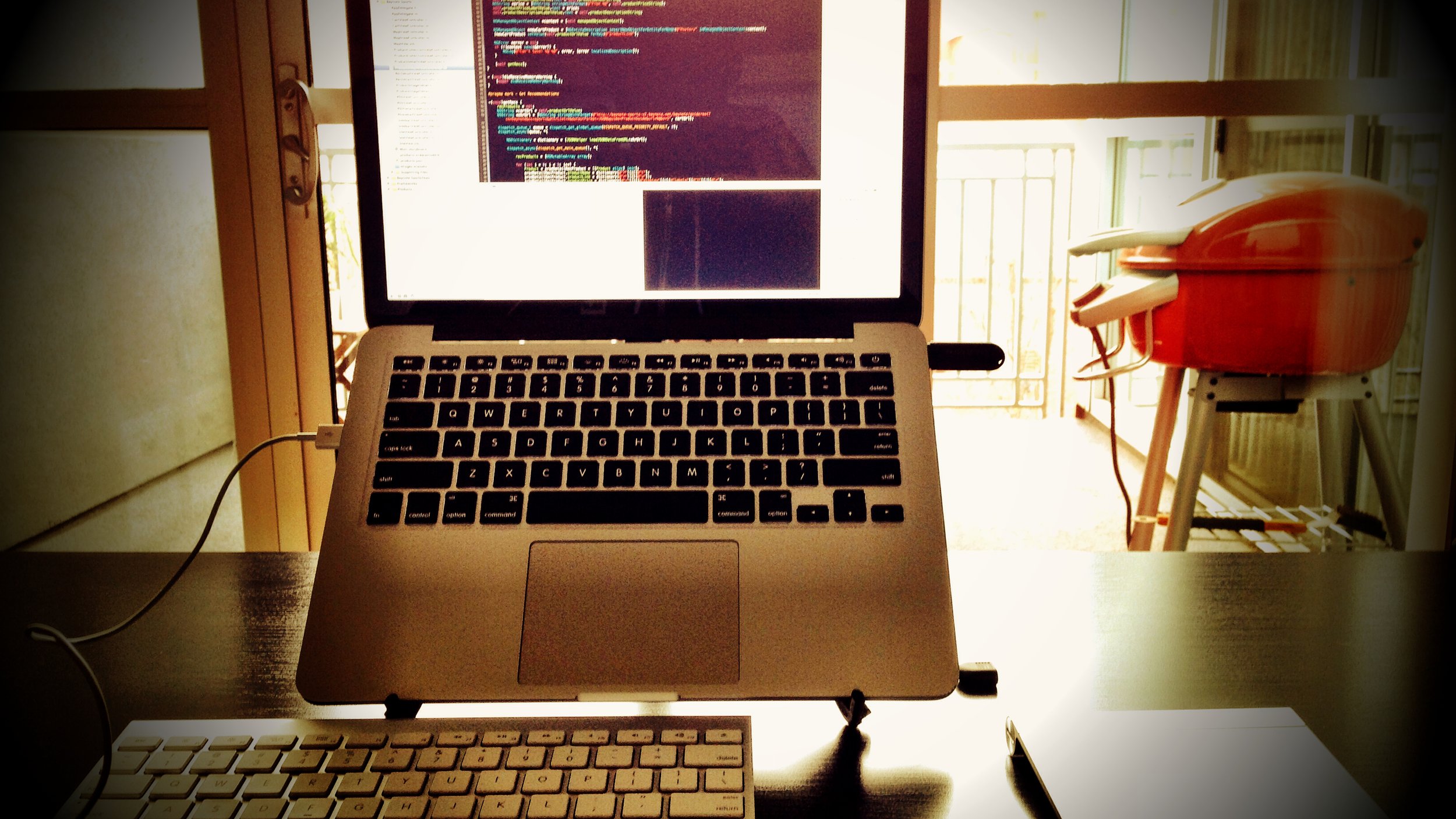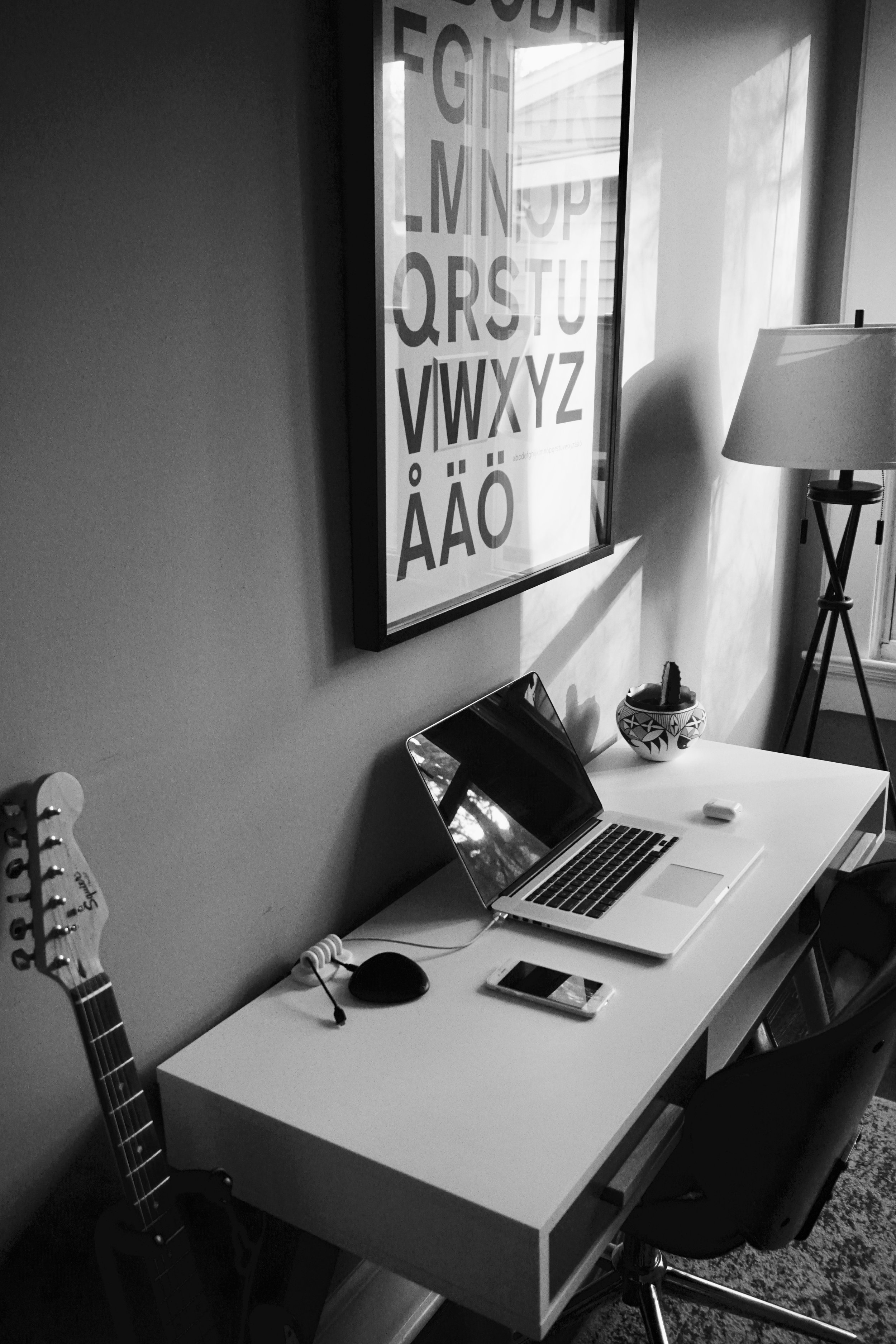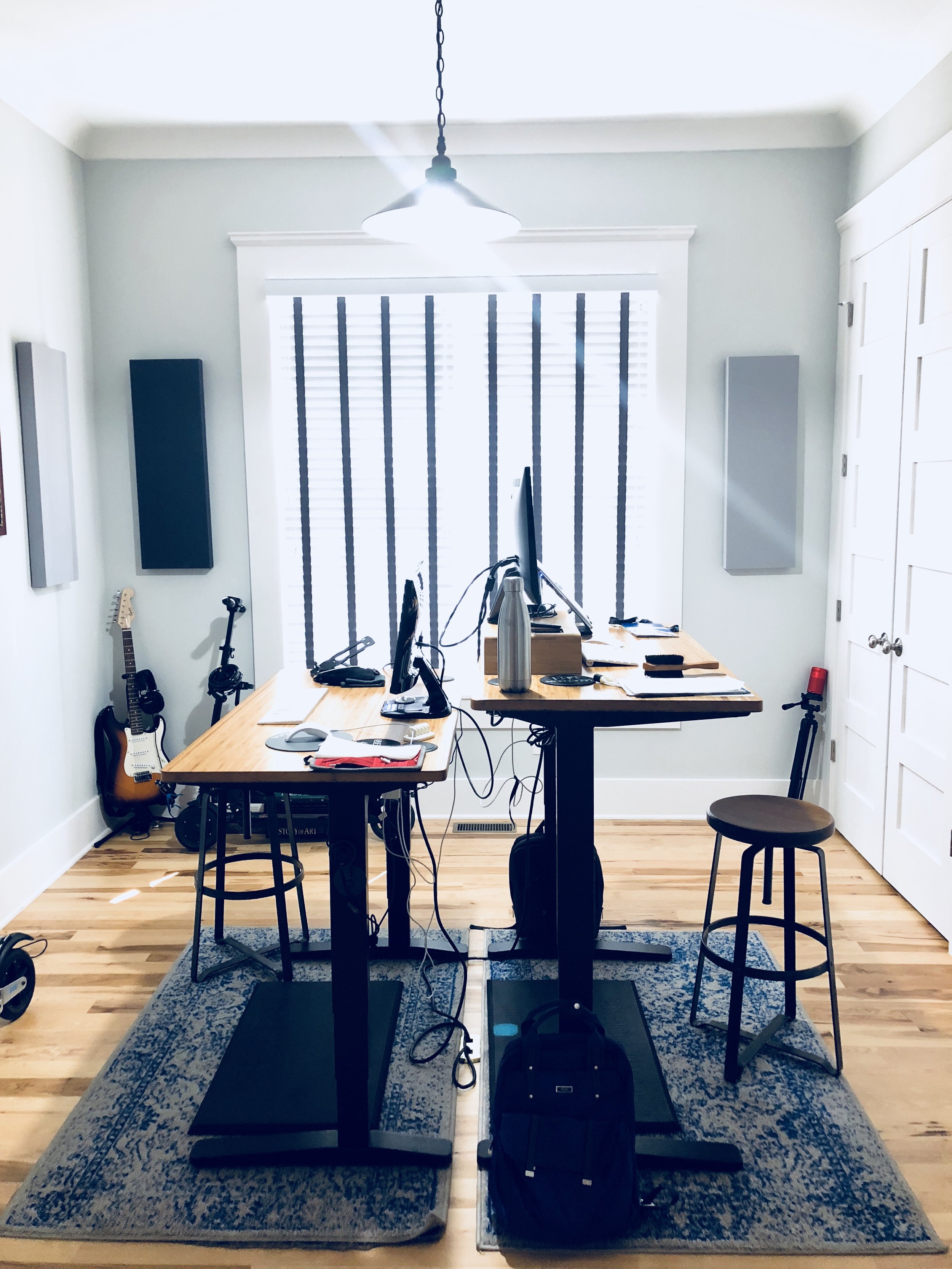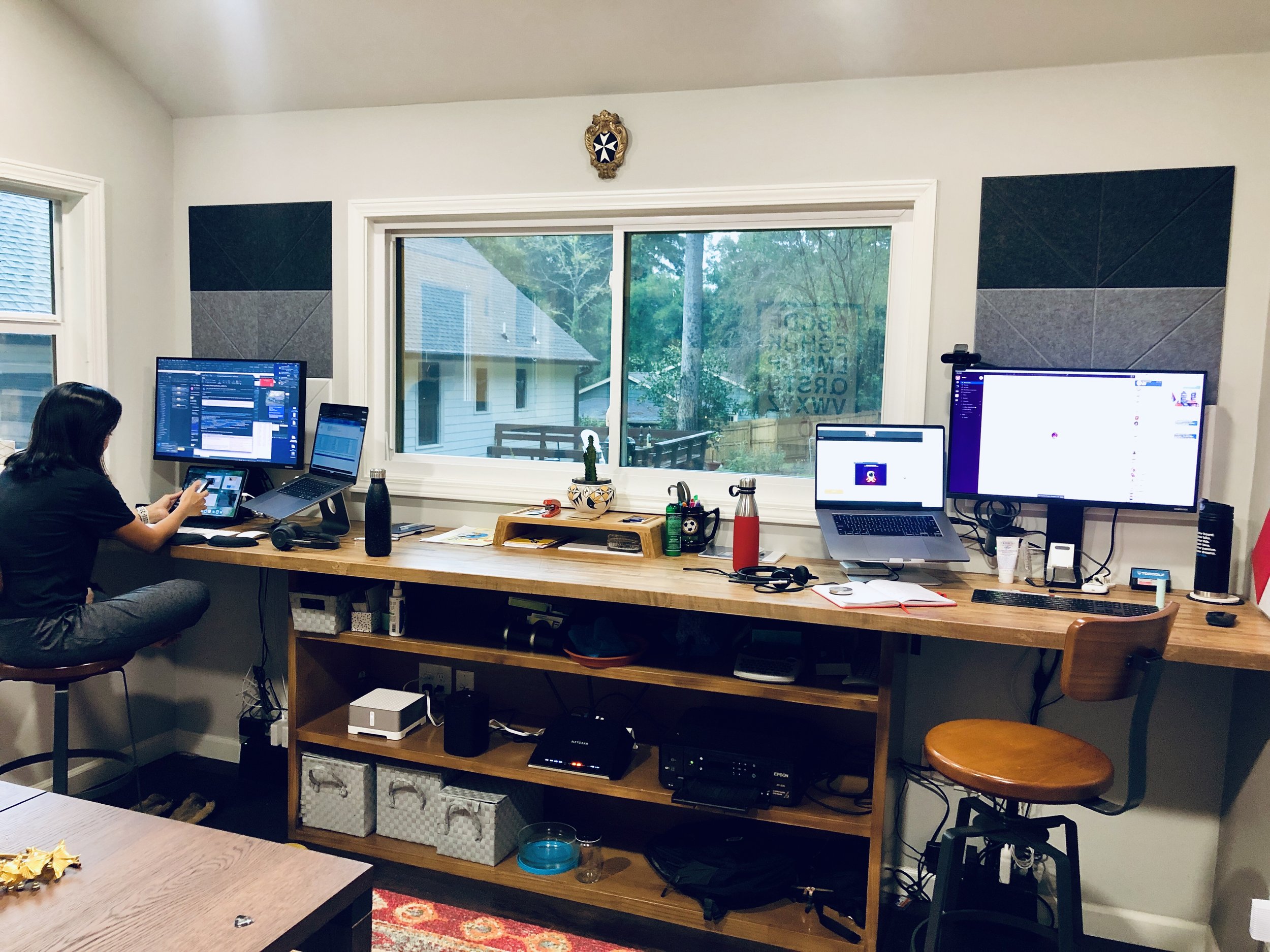Optimizing a Home Office
“Buildings should serve people, not the other way around.”
John Portman
Work From Home has become what my wife calls, live at work. Each one of us adapting in our own way into a semi-permanent remote worker status. Dining room tables, closets, garages, and empty guest rooms have transformed into make shift offices and classrooms. Our experience in working remotely for extended periods of time is not new. Having worked from home in some capacity or another since 2008. During that time it became clear to us the value of planning some level of productive space in your home up front.
One time it was putting a desk in the guest bedroom of our two-bedroom apartment in Atlanta. Another time we set up the dining room table to be a multi-functional bookshelf and workstation combination in our San Jose townhouse. This setup allowed us and our nephew to have a shared place to work from. When we moved back to Atlanta we converted an extra bedroom into a dedicated office. Most recently we turned a standalone tool workshop in the backyard into a fully detached office space. The one consistent theme through all of these permutations has been to define a space, no matter how small, where work/creativity could take place and be left there when done.









Tastes and constraints have altered the layout, technology, and vibe of each home office over the many years. With both of us working from home for mots of 2020 and into the foreseeable future, we planned one more big change to make the office something we could work comfortably in for the next 12 months or more. We wanted to try and define something more timeless as well as complete in its office feel and function. The hard part was realizing that in searching for inspiration we needed to stop looking at images of “home offices” and actually reimagine our former offices. What came out of that thinking is what inspired this post.
The little changes that we made that would amount to huge differences in productivity, connectedness, and work-life balance. Along with the lessons learned from the past experiments with creating a workplace in various size homes. Before doing anything, I recommend a reset. Taking everything out of the space and seeing it in its bare form. Clearly listing out what you do and the demands on the space that will bring. Lastly, I would filter each purchase or piece added to the room through a lens of a multi-function necessity. Single purposes items don’t give a space that flexibility it needs to work for most anyone at anytime.
Additionally, this article on Dwell talks about how the Pandemic changed Interior Design in 2020. It highlights the desire for more complete home office setups, defining thresholds of space, creating multi-functional rooms, and more. For an even deeper dive in design thinking I recommend reading both “A Pattern Language” and “101 Things I Learned in Architecture School.”
Sound Management
The sound and acoustics in a space can either help or hurt focus. If there are multiple people talking on calls, it will only get worse. Investing in sound adjusting materials will go along way in making the room or area workable during the day as well as keeping the noise coming from it in its place.
Feltrite Sound Dampening Wall Art: Highly customizable and easy to install.
Acoustic Panels : Better sound absorption but less design flexibility.
Sound Absorption Panels & Bass Traps: these can be placed behind wall art or discretely in corners. Requires more knowledge of sound properties and behavior for optimal setup.
Web Meetings
Zoom meetings have become a standard part of remote work and a joke. As much as we love to bemoan them, for a remote worker, this is the outside world's working relationship with you. We lose a lot of how we present ourselves without the day-to-day nuance of in-person interaction, hand gestures, body language, ad-hoc chit chat. So dressing up your meeting presentation and technology can help fill in that gap.
Dedicated Web Camera: Consider upgrading from the built-in low resolution cameras on most laptops to a Logitech 4K Webcam or repurpose your old point and shoot. This will make you look as if you are really in the room with others.
Dedicated Microphone / Headset: For the best sound quality, check out Yeti Mics if working alone. If working in a shared space, look at AirPods or Bose Bluetooth headsets.
Dedicated Lighting: If you are in a low light area, consider some external lightning for brightening up your web meetings.
Connectivity
Your internet connection powers your remote "presence." Flaky and spotty coverage is akin to being the perpetual late arrival or seemingly inaccessible. Also, why would you want to have a great presentation or idea you are sharing butchered by a slow uplink. Through the pain of too many drop connections, I have found some key areas of upgrades that are worth it and those that are not.
Internet: Upgrade your internet speeds, some or all of your internet bill may be reimbursable through your company.
Wired vs Wireless: Use multiple routers connected to the main modem by ethernet instead of extenders and mesh wifi access points. Connect as many devices to network via ethernet connections when possible.
SSID: If you can, run a separate Wireless network with unique name. Keeping other devices, kids, and interruptions from disturbing valuable work sessions.
Productivity
It's not all about being online. Sometimes analog or offline tools can help shift the mood of the space and foster creativity. Though they may not be used daily, they offer a welcome break from the routine. If your camera resolution is high enough or you have a tablet, they can even allow for more interactive sketching / diagraming with your team from anywhere.
Whiteboard or Split-Flap Display: Analog displays like a Vestaboard or whiteboard can help give low-tech focus to a specific idea or topic.
Multiple Work Surfaces: Ideally one collaborative and one individual. Also, a stack of notebooks and pens are great for note taking or ideation.
Displays: adding a second monitor or tablet will help juggling multiple inputs or interactions at once.
Layout & Location
Lastly, but perhaps most important, the layout and location of your home office can make or break your experience. Here you should allow for the most flexibility. Test out different areas at times through the day or week before committing to one. Ask yourself, "is this where I want and can be for 8 hours a day?" Are all your needs met like quick access to a restroom, water and snacks, or the need to answer the occasional doorbell ring?
Work Life Balance: Leave it all in the office. Make it a committed space.
Locations: Consider a spare bedroom, the garage, attic, basement, or even a porch that could be enclosed.
Zones: try to setup focus areas even if space is limited. This way a whole day in the same room can different with a swivel of a chair.

